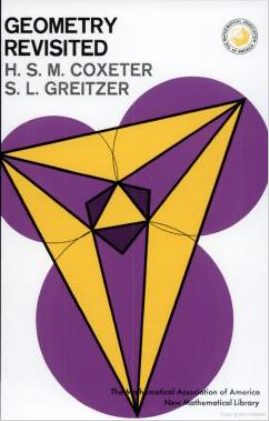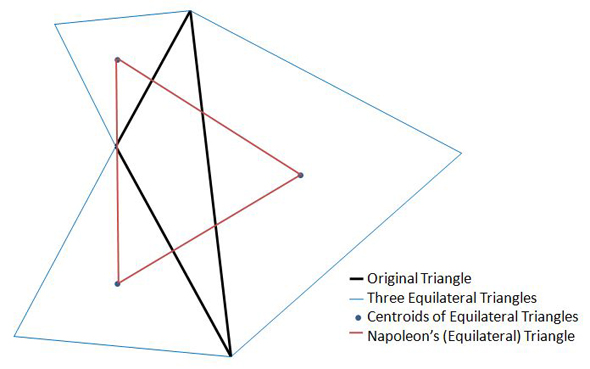Napoleon's Theorem
by Andrew Boyd
Today, did he, or didn't he? The University of Houston's College of Engineering presents this series about the machines that make our civilization run, and the people whose ingenuity created them.
Napoleon Bonaparte is best known as a great military commander and one time Emperor of France — a man who seized power in the aftermath of the French Revolution. An emperor wasn't exactly what the revolutionaries had in mind. But Napoleon left a lasting, albeit mixed, legacy as an enlightened despot. He established a uniform code of laws. He supported a social order based on merit, not birthright. He believed in the importance of science and education — especially, mathematics.
By all accounts, Napoleon excelled in mathematics as a student. In later years he surrounded himself with some of the greatest mathematicians of his era — Lagrange, Laplace, and Legendre among them. There's even a famous result in trigonometry that bears his name — Napoleon's Theorem. But much of that fame comes from the question, "Did Napoleon actually prove it?"
A lot of fuel for the debate was provided by an off-hand comment of two twentieth century mathematicians. One was the famed geometer Donald Coxeter. In the textbook, Geometry Revisited, he and co-author Samuel Greitzer write, "… the possibility of Napoleon knowing enough geometry [to prove the result] is as questionable as the possibility that he knew enough English to compose the famous palindrome ABLE WAS I ERE I SAW ELBA." Coxeter and Greitzer didn't just challenge the claim that Napoleon was first. They didn't think he was capable of solving it at all. It's quite an insult coming from the English born Coxeter.
 So could Napoleon have proved the result? A review of the many proofs leaves little doubt — he certainly could have. Napoleon's Theorem requires logical thinking but little more. Most proofs of it are understandable by a good high school student. What led Coxeter and Greitzer to disparage Napoleon's abilities isn't clear, though it may have been just a poor effort at humor. The palindrome ABLE WAS I ERE I SAW ELBA is fabled to have been uttered by Napoleon, who at one time was exiled to Elba.
So could Napoleon have proved the result? A review of the many proofs leaves little doubt — he certainly could have. Napoleon's Theorem requires logical thinking but little more. Most proofs of it are understandable by a good high school student. What led Coxeter and Greitzer to disparage Napoleon's abilities isn't clear, though it may have been just a poor effort at humor. The palindrome ABLE WAS I ERE I SAW ELBA is fabled to have been uttered by Napoleon, who at one time was exiled to Elba.
But was Napoleon the first to discover the result that bears his name? That's not at all clear. Napoleon might never have actually discovered the steps in the proof. The result simply could have been named in his honor by someone seeking to curry favor.
More to the point, though, it really doesn't matter. Fascinating as Napoleon's Theorem is, it's not profound enough to cement anyone's place in history. And it's one of those delightful geometric results that's probably been discovered countless times, and will be again. The wonder doesn't lay in who first proved it, but in the uniquely human ingenuity required to discover, and appreciate, its beauty.
I'm Andy Boyd at the University of Houston, where we're interested in the way inventive minds work.
Many thanks to Mr. Pierre Augier for bringing this story to my attention.

Napoleon's Theorem is as follows. Take any triangle, and for each edge construct an equilateral triangle with that edge as its base. The three centroids of the triangles so constructed define an equilateral triangle.
Proofs of this theorem can be found at, for example, the Cut the Knot web site, http://www.cut-the-knot.org/proofs/napoleon.shtml. The proof in Coxeter and Greitzer's book is also quite accessible.
H. S. M. Coxeter and S. L. Greitzer. Geometry Revisited. New York: Random House, 1967.
P. Davis and R. Hersh. The Mathematical Experience. Boston: Birkhauser, 1981.
A. Johnson. Famous Problems and Their Mathematicians. Greenwood Village, Colorado: Teacher's Idea Press, 1999.
All pictures by E. A. Boyd.